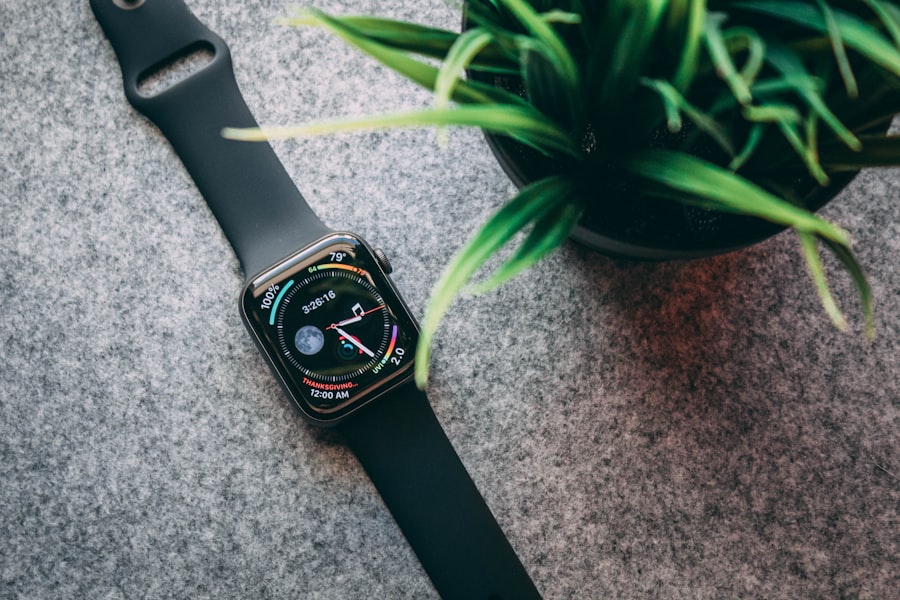Cardiac rehabilitation programs are structured, supervised programs designed to improve the health and well-being of individuals who have experienced heart-related issues, such as heart attacks, heart surgery, or chronic heart disease. These programs typically encompass a multidisciplinary approach, integrating medical care, physical activity, nutritional counseling, and psychological support. The primary goal is to enhance the quality of life for patients while reducing the risk of future cardiovascular events.
Cardiac rehabilitation not only focuses on physical recovery but also emphasizes lifestyle changes that can lead to long-term health benefits. The importance of cardiac rehabilitation cannot be overstated. Research has consistently shown that participation in these programs significantly reduces mortality rates and improves overall cardiovascular health.
For instance, a meta-analysis published in the Journal of the American College of Cardiology found that patients who completed a cardiac rehabilitation program had a 25% lower risk of mortality compared to those who did not participate. This underscores the critical role that structured rehabilitation plays in the recovery process and highlights the need for innovative tools and technologies to enhance these programs further.
Key Takeaways
- Cardiac rehabilitation programs are essential for improving the health and well-being of individuals with heart conditions.
- Wearables play a crucial role in monitoring physical activity and providing valuable data for healthcare professionals.
- Tracking heart rate and blood pressure using wearables is important for managing and preventing cardiovascular issues.
- Wearables can be utilized to promote medication adherence and provide health education to patients in cardiac rehabilitation programs.
- Integrating wearables into telemedicine allows for remote monitoring of patients, improving access to care and support.
The Role of Wearables in Monitoring Physical Activity
Wearable technology has revolutionized the way individuals monitor their physical activity, providing real-time data that can be invaluable in cardiac rehabilitation settings. Devices such as fitness trackers and smartwatches are equipped with sensors that can measure various parameters, including steps taken, distance traveled, and calories burned. This data is crucial for patients recovering from cardiac events, as it allows them to track their progress and stay motivated throughout their rehabilitation journey.
Moreover, wearables can facilitate personalized exercise regimens tailored to individual capabilities and recovery goals. For example, a patient recovering from a myocardial infarction may start with low-intensity walking, gradually increasing their activity level as they build strength and endurance. Wearable devices can provide feedback on performance, helping patients understand when to push themselves and when to rest.
This level of monitoring not only enhances adherence to prescribed exercise programs but also empowers patients by giving them a sense of control over their recovery.
The Importance of Wearables in Tracking Heart Rate and Blood Pressure
In addition to monitoring physical activity, wearables play a pivotal role in tracking vital signs such as heart rate and blood pressure. Continuous heart rate monitoring is particularly beneficial for cardiac rehabilitation patients, as it allows for real-time assessment of cardiovascular response to exercise. For instance, if a patient’s heart rate exceeds a predetermined threshold during physical activity, they can receive immediate feedback through their wearable device, prompting them to adjust their intensity accordingly.
Blood pressure monitoring is equally critical in this context. Hypertension is a common comorbidity in patients with cardiovascular disease, and managing blood pressure is essential for reducing the risk of further complications. Wearable devices equipped with blood pressure sensors can provide users with regular readings, enabling them to identify trends and make informed decisions about their health.
For example, if a patient notices consistently elevated blood pressure readings during exercise sessions, they can consult with their healthcare provider to adjust their medication or modify their exercise plan.
Utilizing Wearables for Medication Adherence and Health Education
Wearable technology also has the potential to enhance medication adherence among cardiac rehabilitation patients. Many individuals struggle with maintaining their medication regimens due to forgetfulness or confusion about dosages. Some advanced wearables come equipped with features that remind users when it’s time to take their medications, ensuring they stay on track with their treatment plans.
This is particularly important for patients managing multiple medications, as adherence is crucial for preventing adverse events and promoting optimal recovery. In addition to medication reminders, wearables can serve as platforms for health education. Many devices offer access to educational resources that inform users about their condition, treatment options, and lifestyle modifications necessary for heart health.
For instance, a patient might receive notifications about dietary recommendations or tips for stress management based on their activity levels and heart rate data. This integration of education into daily routines fosters a more comprehensive understanding of one’s health and encourages proactive engagement in the rehabilitation process.
Integrating Wearables into Telemedicine for Remote Monitoring
The integration of wearables into telemedicine has transformed the landscape of cardiac rehabilitation by enabling remote monitoring of patients’ health status. Telemedicine allows healthcare providers to connect with patients virtually, facilitating consultations without the need for in-person visits. When combined with wearable technology, this approach enhances the ability to monitor patients’ progress continuously and intervene promptly when necessary.
For example, a patient recovering from heart surgery may be required to attend regular follow-up appointments to assess their recovery. However, with wearable devices transmitting real-time data on physical activity levels, heart rate, and blood pressure directly to healthcare providers, these appointments can be streamlined or even conducted remotely. This not only saves time for both patients and providers but also ensures that patients receive timely interventions based on their monitored data.
The ability to adjust treatment plans dynamically based on real-time information can lead to improved outcomes and greater patient satisfaction.
The Potential of Wearables in Personalizing Exercise Programs
Personalization is a key component of effective cardiac rehabilitation programs, and wearables offer unique capabilities in this regard. By collecting data on individual performance metrics, wearables can help healthcare providers design tailored exercise programs that align with each patient’s specific needs and goals. For instance, a wearable device might track a patient’s response to different types of exercises—such as aerobic activities versus strength training—allowing clinicians to refine the program based on what works best for that individual.
Furthermore, wearables can adapt exercise recommendations based on ongoing performance data. If a patient demonstrates significant improvement in endurance over several weeks, the wearable can suggest increasing the intensity or duration of workouts accordingly. This dynamic approach not only keeps patients engaged but also ensures that they are continually challenged in a safe manner as they progress through their rehabilitation journey.
Challenges and Limitations of Wearables in Cardiac Rehabilitation
Despite the numerous advantages offered by wearable technology in cardiac rehabilitation, several challenges and limitations must be acknowledged.
While many wearables provide valuable insights into physical activity and vital signs, discrepancies in data accuracy can lead to misinterpretations of a patient’s health status.
For example, inaccurate heart rate readings could result in inappropriate exercise recommendations or unnecessary anxiety regarding one’s health. Another challenge lies in patient engagement and adherence to using wearable devices consistently. Some individuals may find wearables cumbersome or may not fully understand how to utilize them effectively.
Additionally, there may be disparities in access to technology among different populations, particularly among older adults or those from lower socioeconomic backgrounds who may not have access to smartphones or advanced wearable devices. Addressing these barriers is essential for ensuring that all patients can benefit from the advancements offered by wearable technology in cardiac rehabilitation.
Future Developments and Innovations in Wearables for Cardiac Rehabilitation
The future of wearables in cardiac rehabilitation holds immense potential for further innovation and development. As technology continues to advance, we can expect more sophisticated devices capable of providing comprehensive health monitoring beyond basic metrics like heart rate and activity levels. For instance, emerging technologies may enable wearables to assess additional parameters such as blood oxygen levels or even detect arrhythmias through advanced algorithms.
Moreover, the integration of artificial intelligence (AI) into wearable technology could revolutionize how data is analyzed and utilized in cardiac rehabilitation programs. AI algorithms could identify patterns in individual health data over time, allowing for more precise predictions regarding potential health risks or complications.
As research continues into the efficacy of wearables in cardiac rehabilitation settings, we may also see an increase in collaborative efforts between technology companies and healthcare providers aimed at developing tailored solutions that address specific patient needs. Such partnerships could lead to the creation of customized platforms that integrate wearables with telehealth services, educational resources, and personalized exercise programs—all designed to enhance the overall effectiveness of cardiac rehabilitation initiatives. In conclusion, the integration of wearable technology into cardiac rehabilitation programs represents a significant advancement in how we approach heart health recovery.
By leveraging real-time data monitoring, personalized exercise regimens, medication adherence support, and telemedicine capabilities, wearables have the potential to transform patient experiences and outcomes in this critical area of healthcare. As we look ahead, continued innovation will undoubtedly shape the future landscape of cardiac rehabilitation, making it more accessible and effective for all individuals seeking to improve their cardiovascular health.
A related article discussing the benefits of wearable technology in healthcare can be found in the article “Unlock the Possibilities with Galaxy Book2 Pro 360.” This article explores how wearable devices, such as smartwatches and fitness trackers, are revolutionizing the way cardiac rehabilitation programs are conducted. Wearables can track a patient’s heart rate, activity levels, and other vital signs, providing valuable data to healthcare providers and helping patients stay on track with their recovery.
FAQs
What are wearables in the context of cardiac rehabilitation programs?
Wearables in the context of cardiac rehabilitation programs refer to electronic devices that are worn on the body and are equipped with sensors to monitor and track various health and fitness metrics such as heart rate, physical activity, and sleep patterns.
How do wearables help in cardiac rehabilitation programs?
Wearables help in cardiac rehabilitation programs by providing real-time monitoring of the patient’s heart rate and physical activity levels. This data can be used by healthcare professionals to tailor exercise programs and track the progress of the patient’s rehabilitation.
What are the benefits of using wearables in cardiac rehabilitation programs?
The benefits of using wearables in cardiac rehabilitation programs include improved patient engagement and adherence to exercise programs, real-time monitoring of vital signs, personalized feedback and coaching, and the ability to track progress over time.
What types of wearables are commonly used in cardiac rehabilitation programs?
Common types of wearables used in cardiac rehabilitation programs include fitness trackers, smartwatches, and chest strap heart rate monitors. These devices are often equipped with accelerometers, heart rate sensors, and GPS tracking capabilities.
Are wearables safe to use in cardiac rehabilitation programs?
When used as intended and under the guidance of healthcare professionals, wearables are generally safe to use in cardiac rehabilitation programs. It is important for patients to follow the manufacturer’s instructions and consult with their healthcare provider if they have any concerns.



